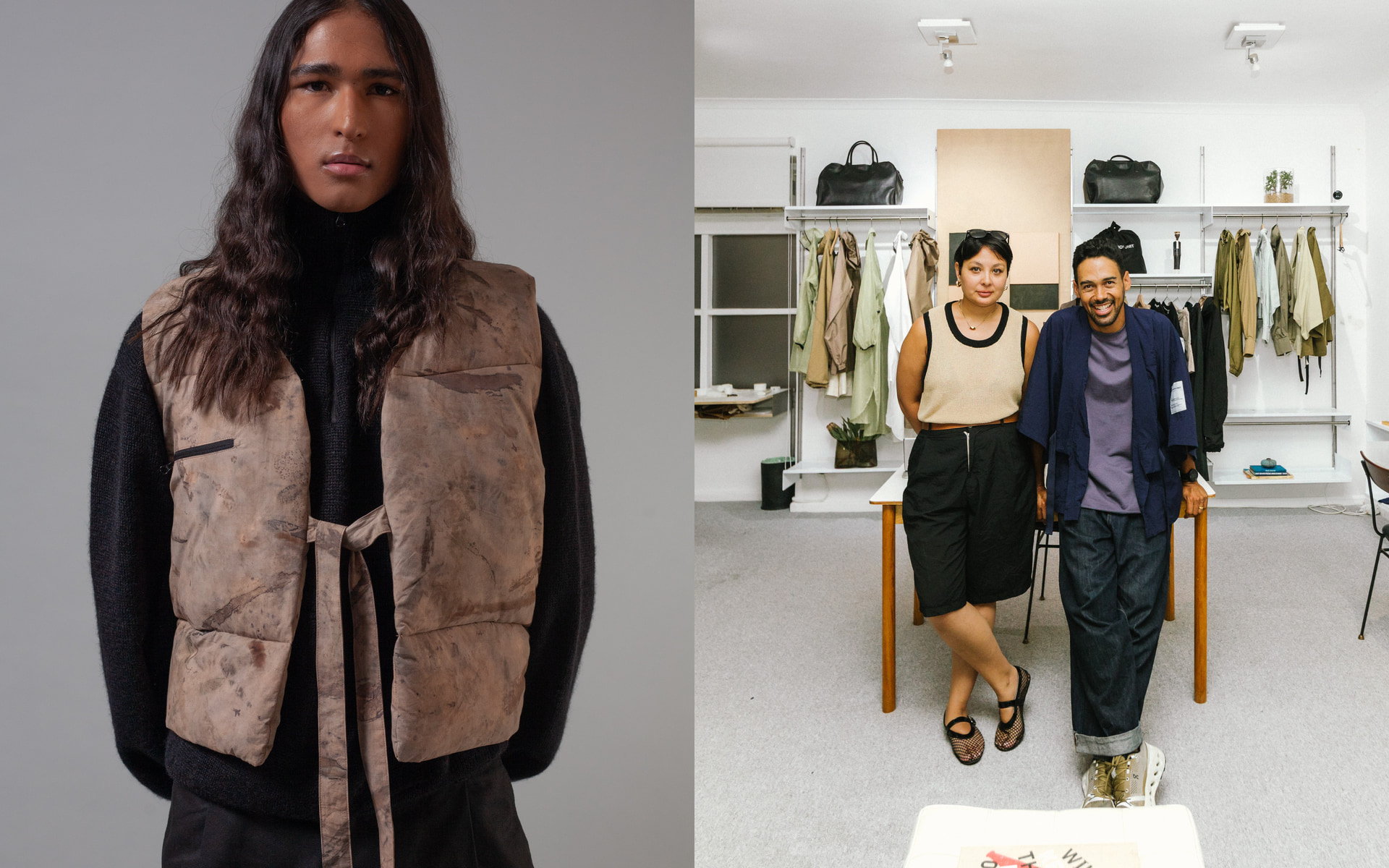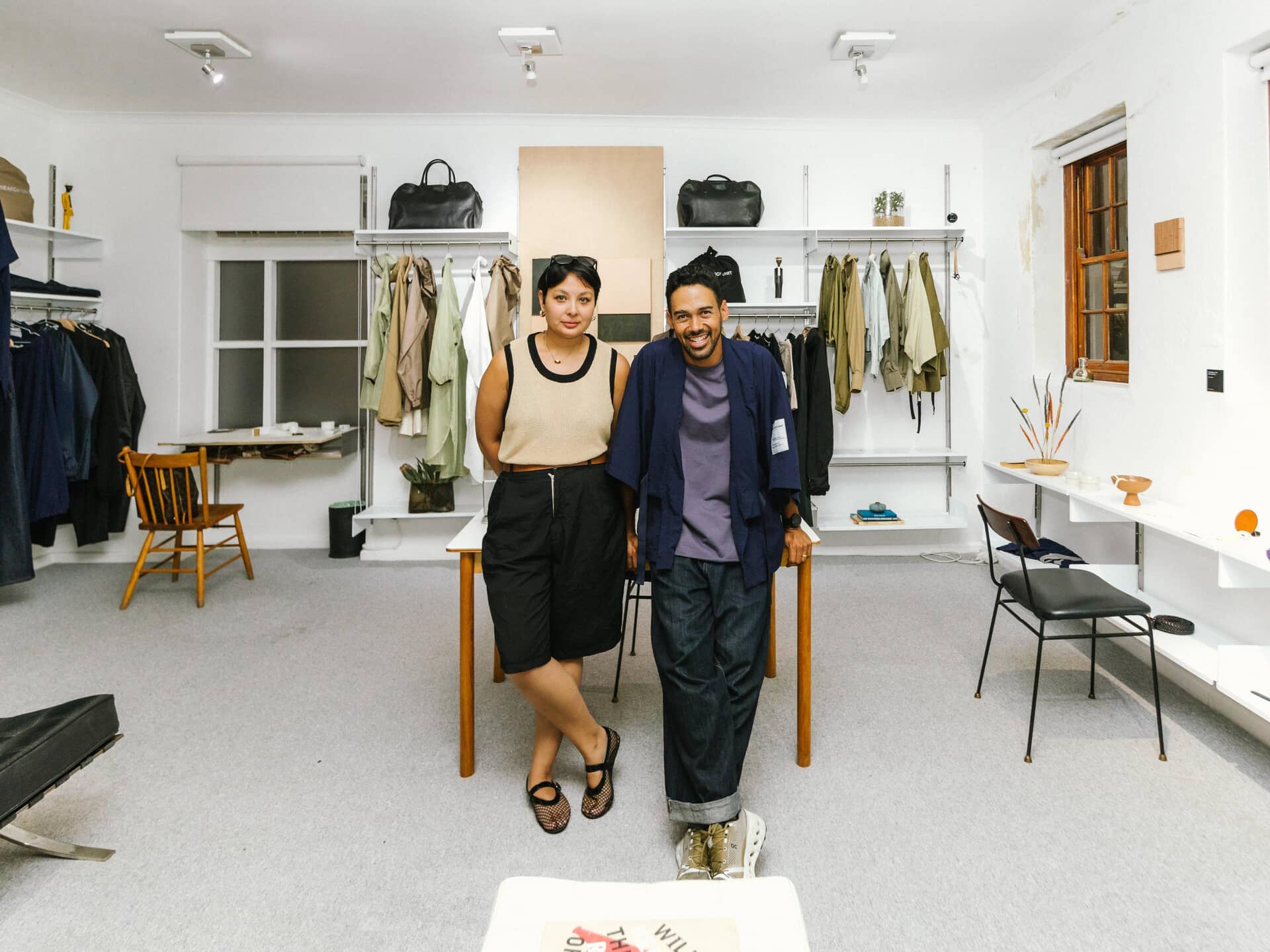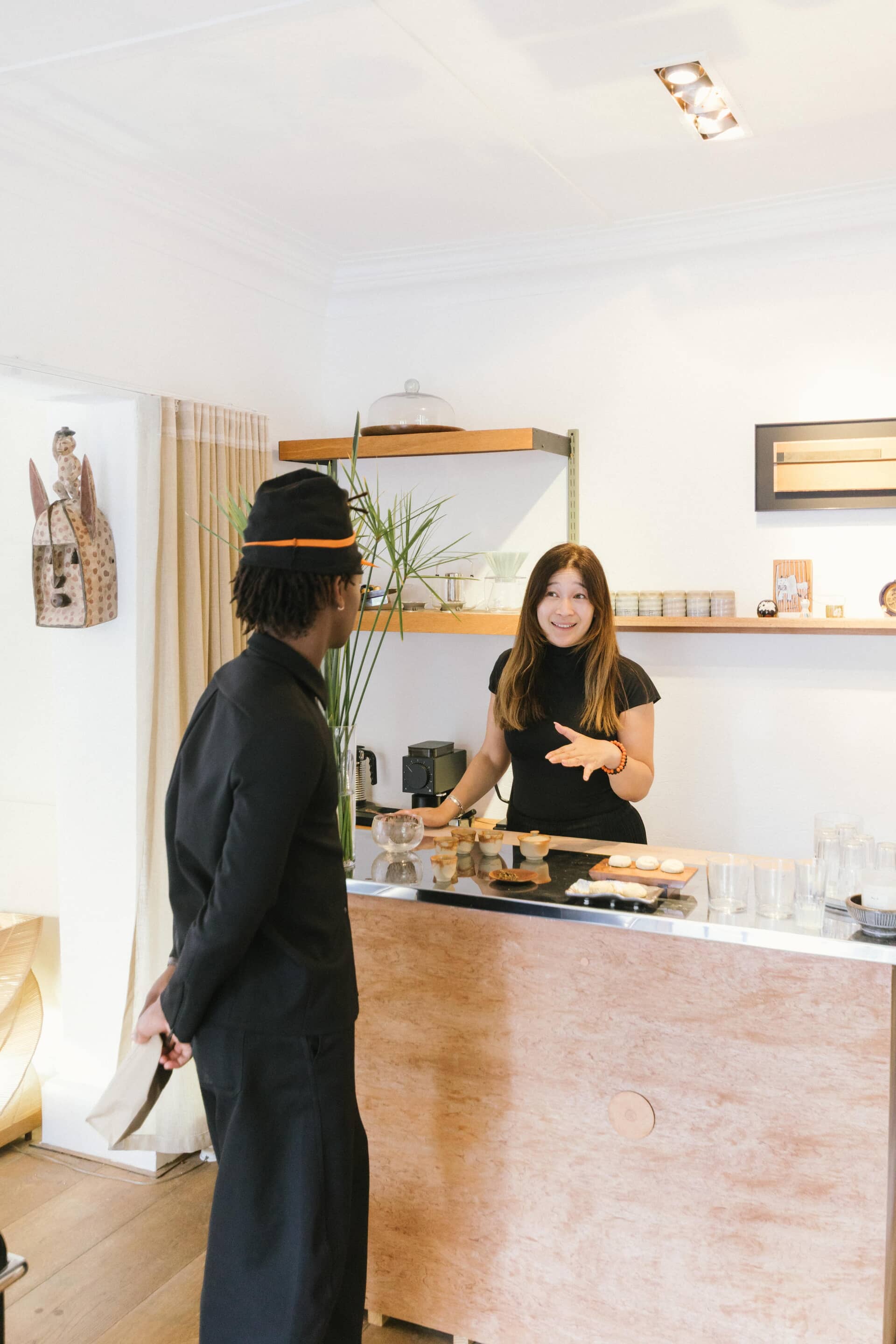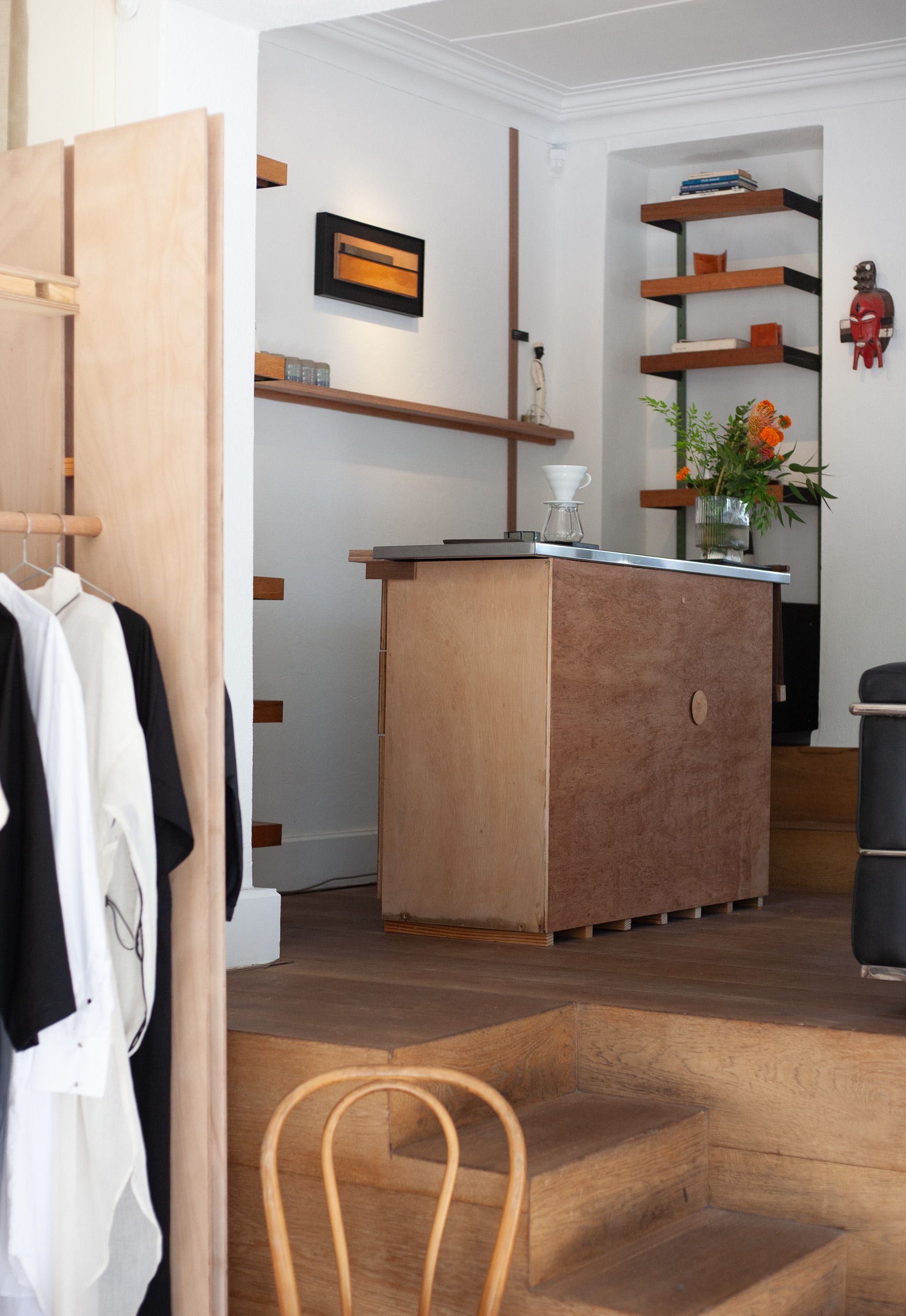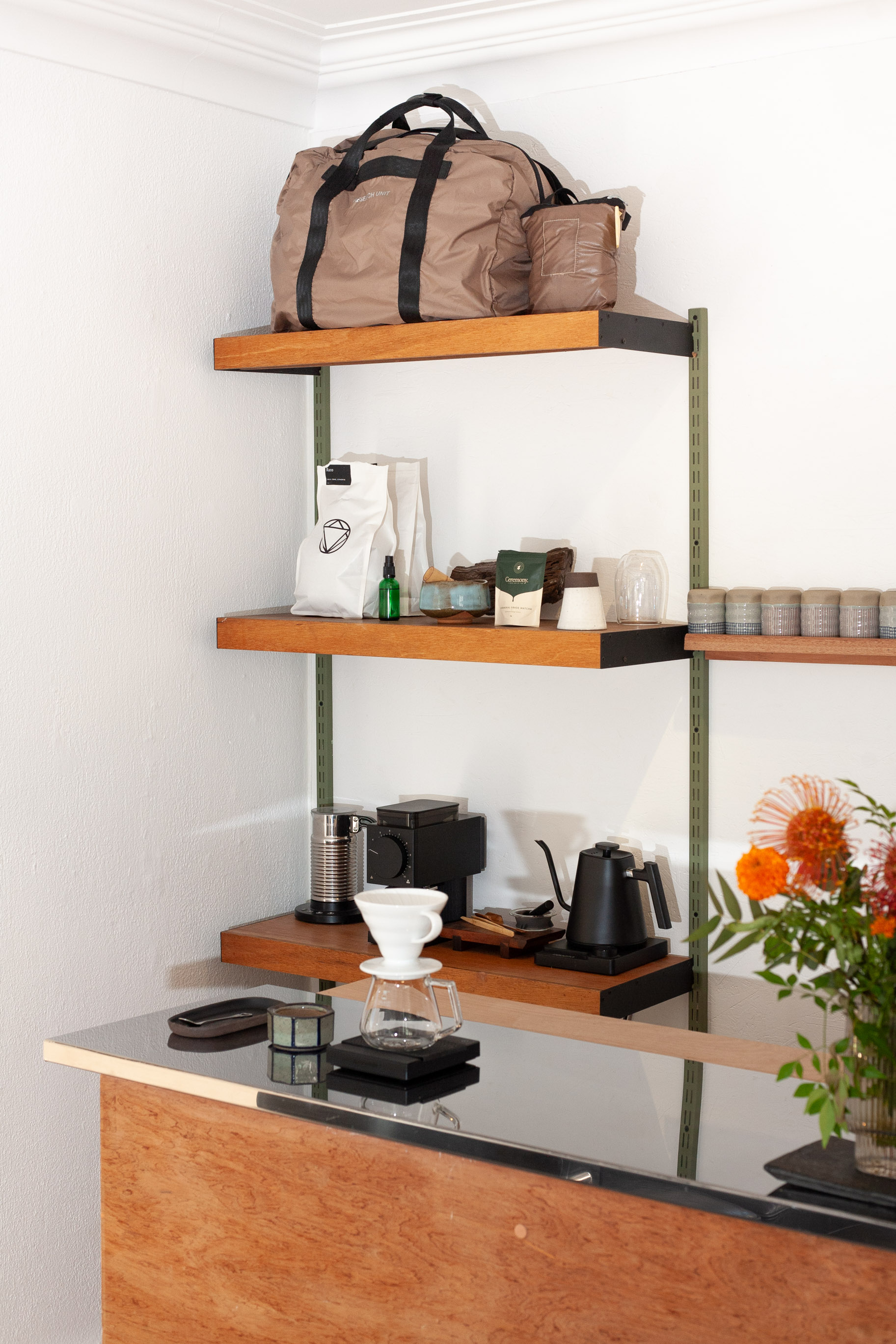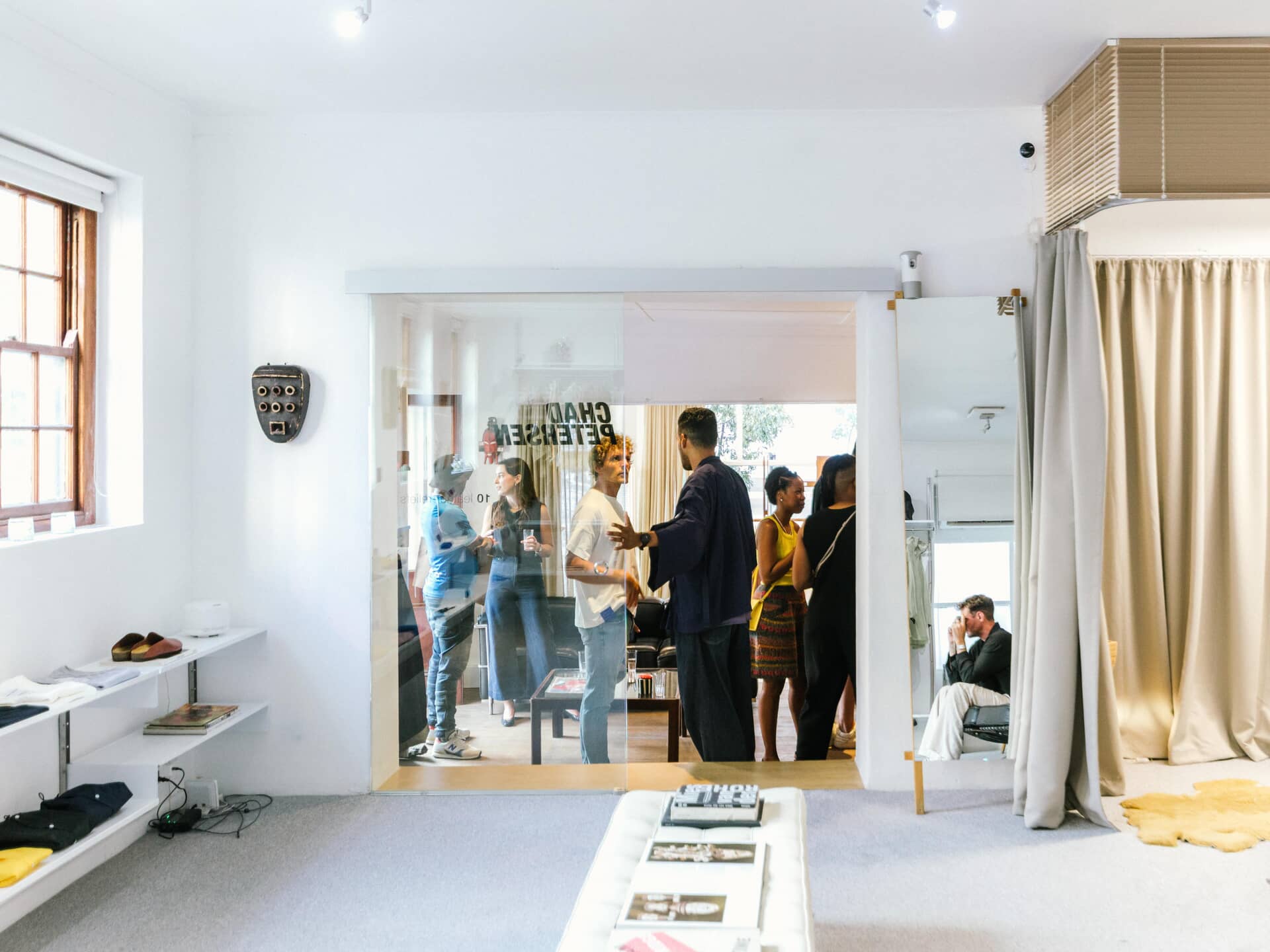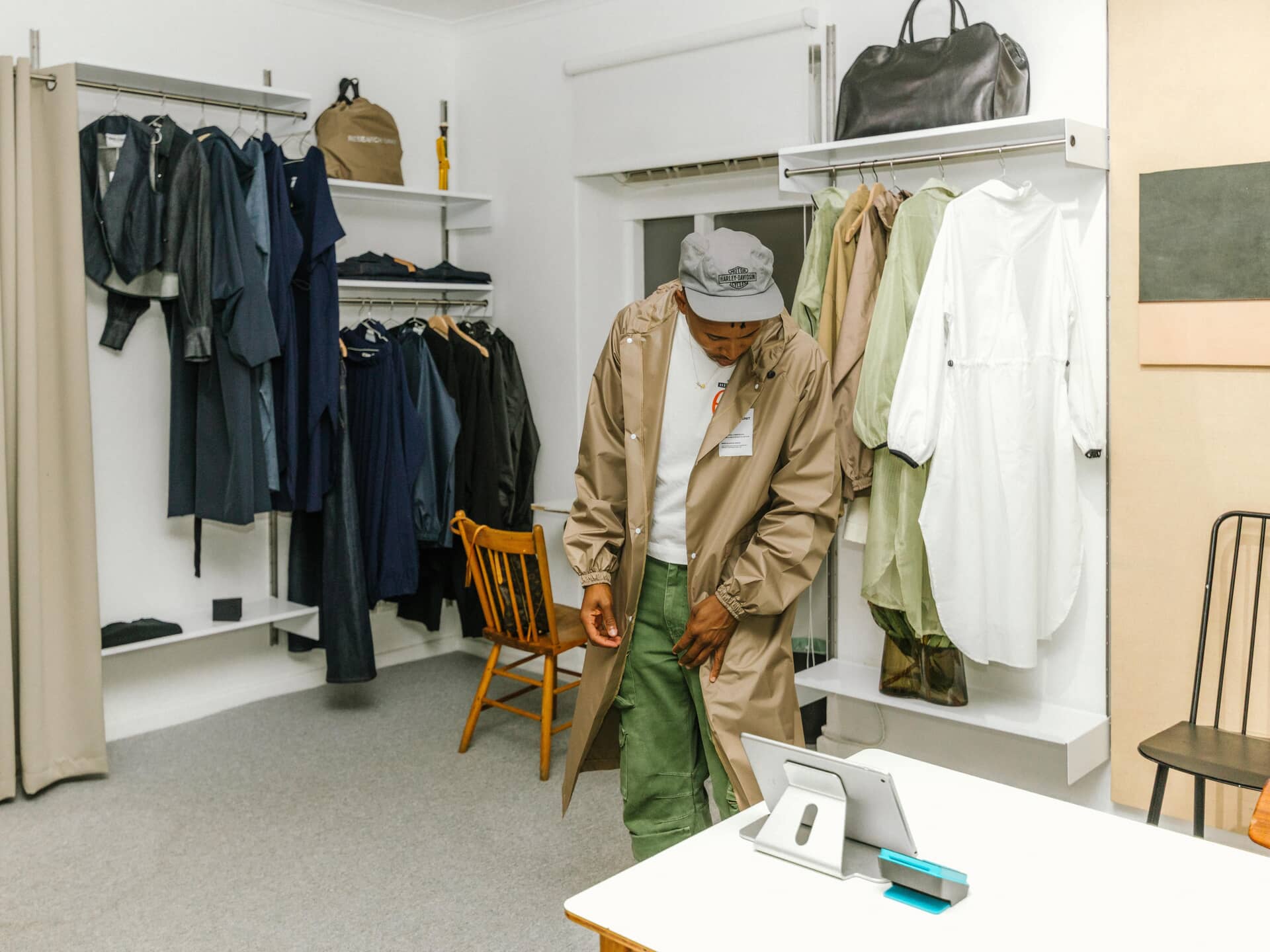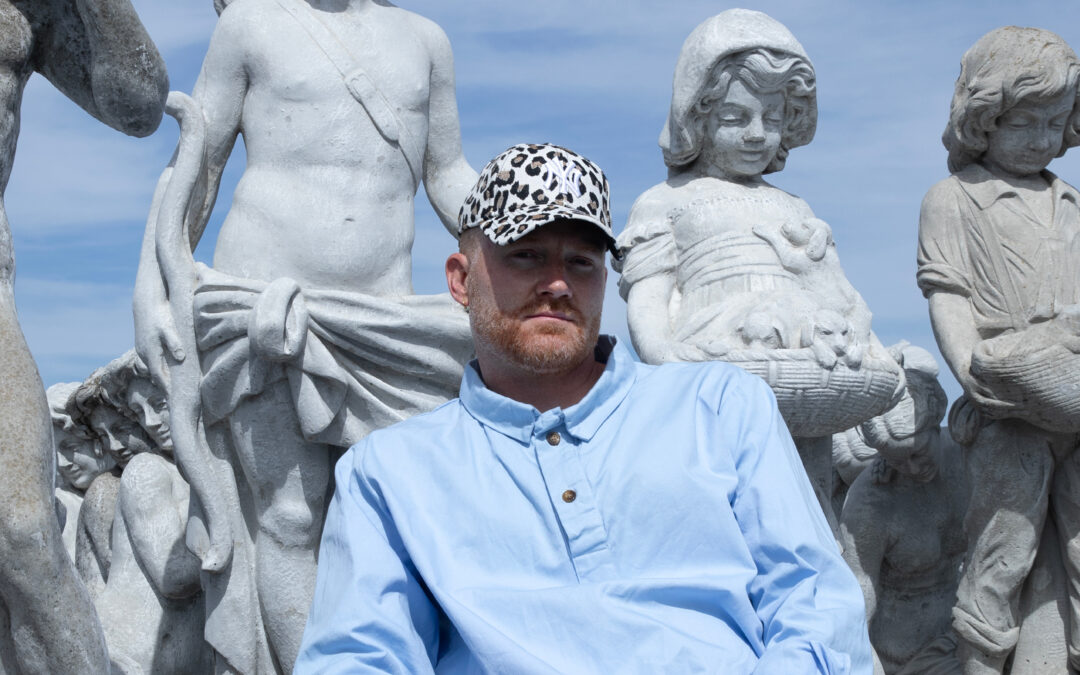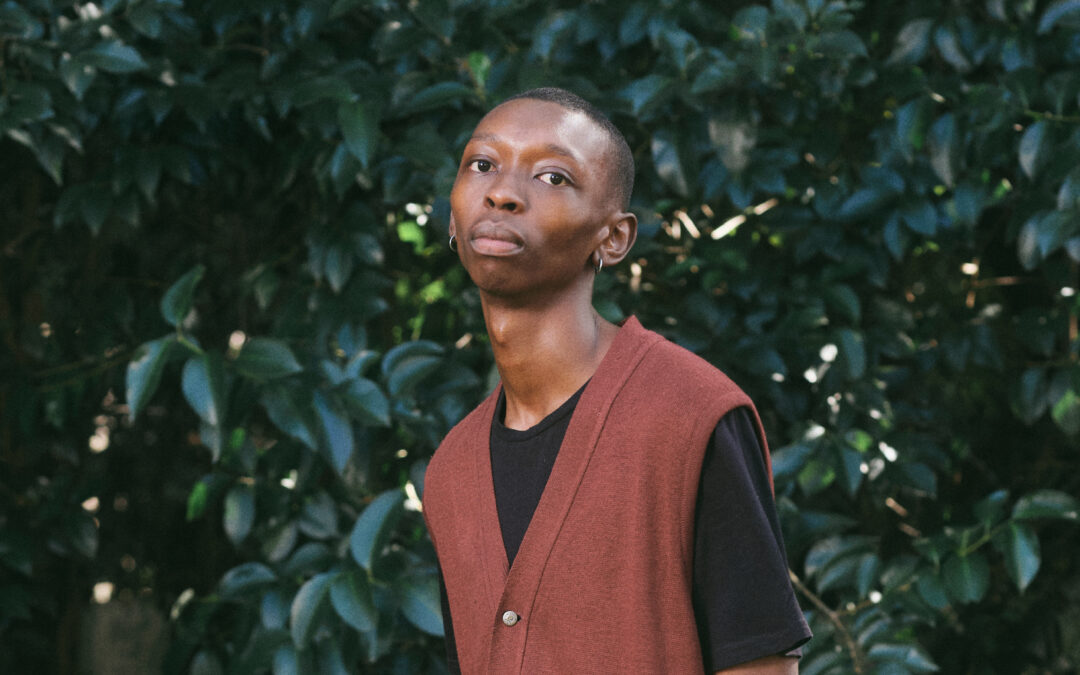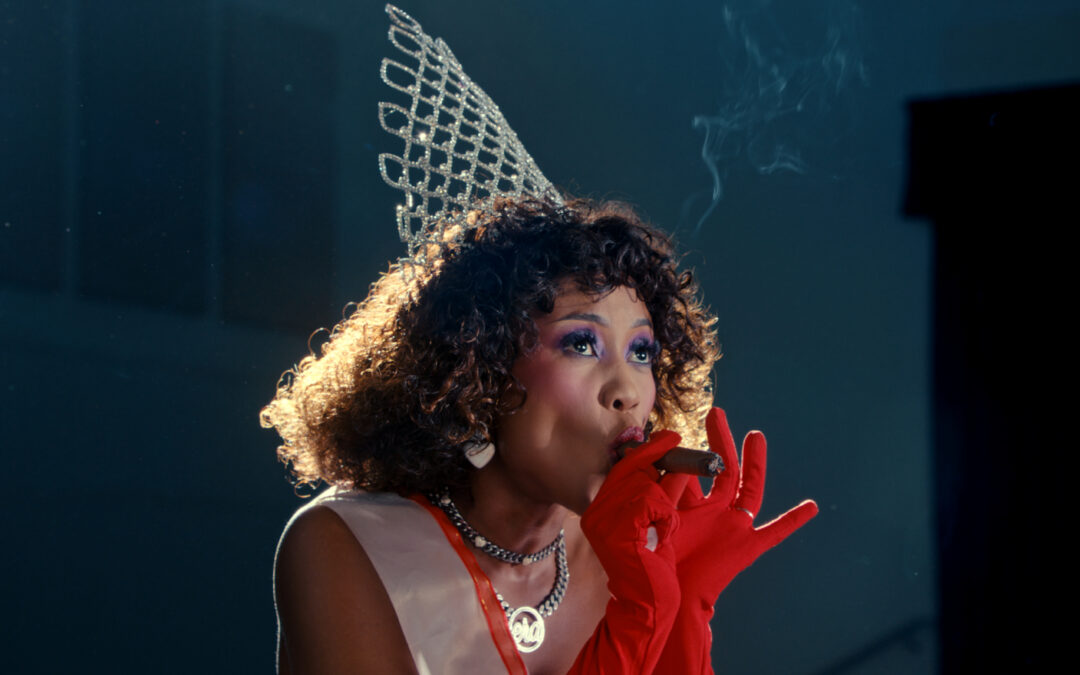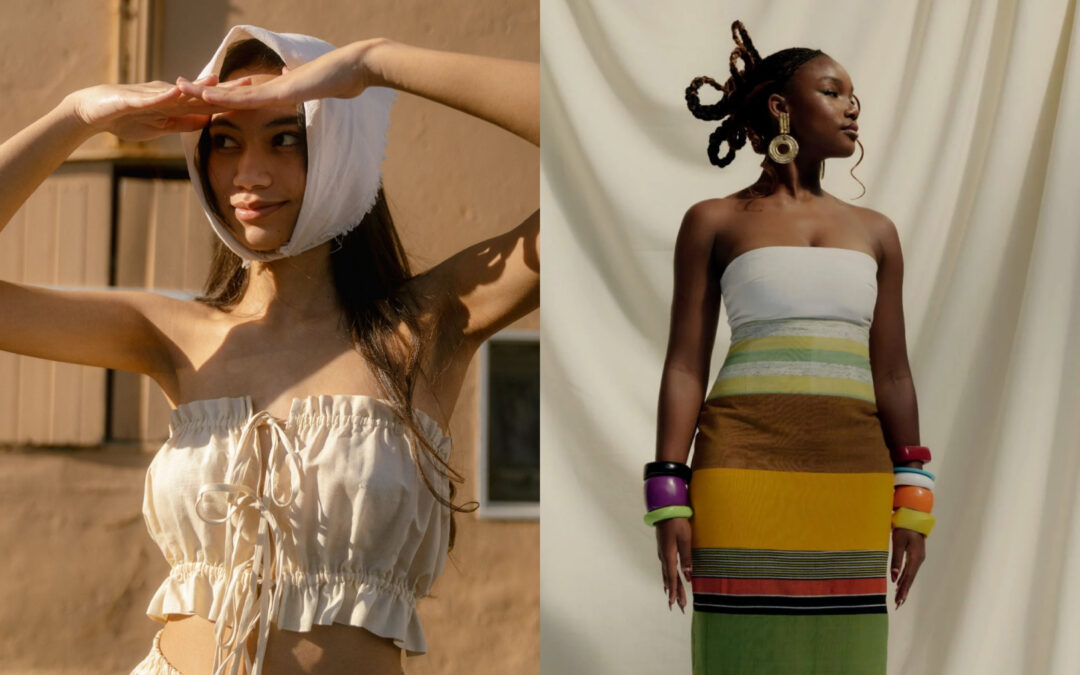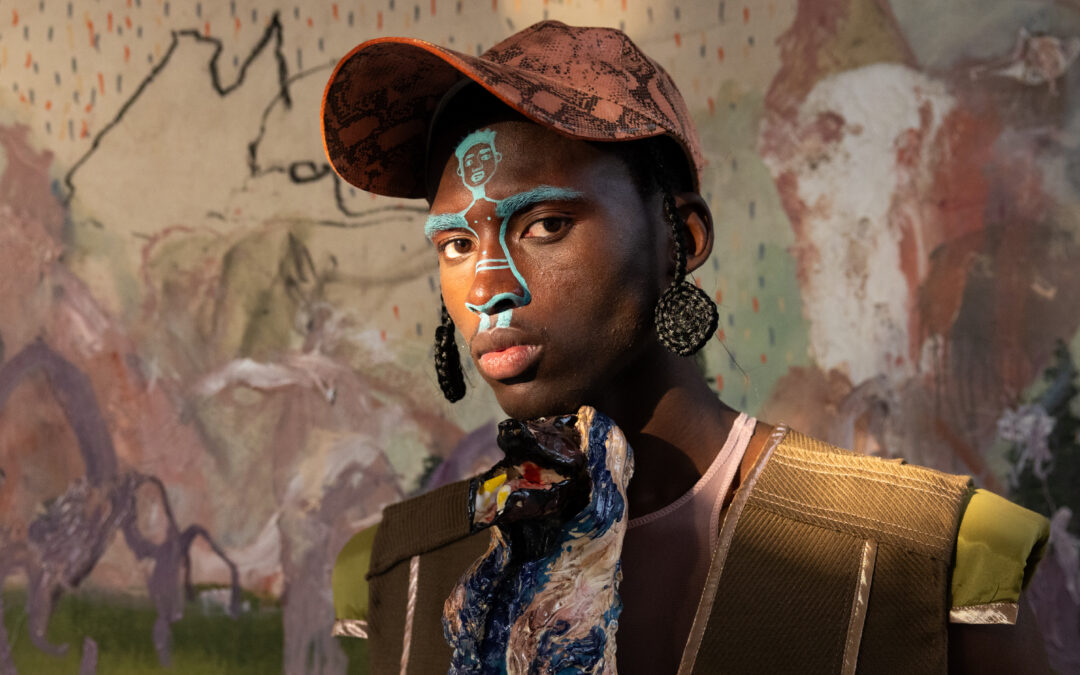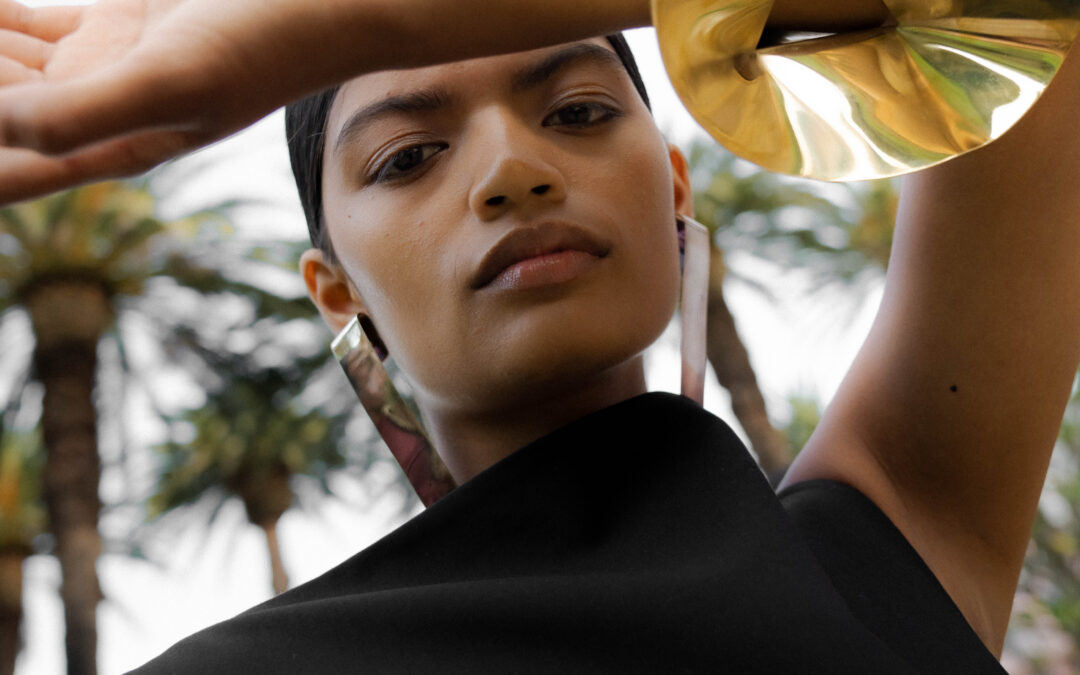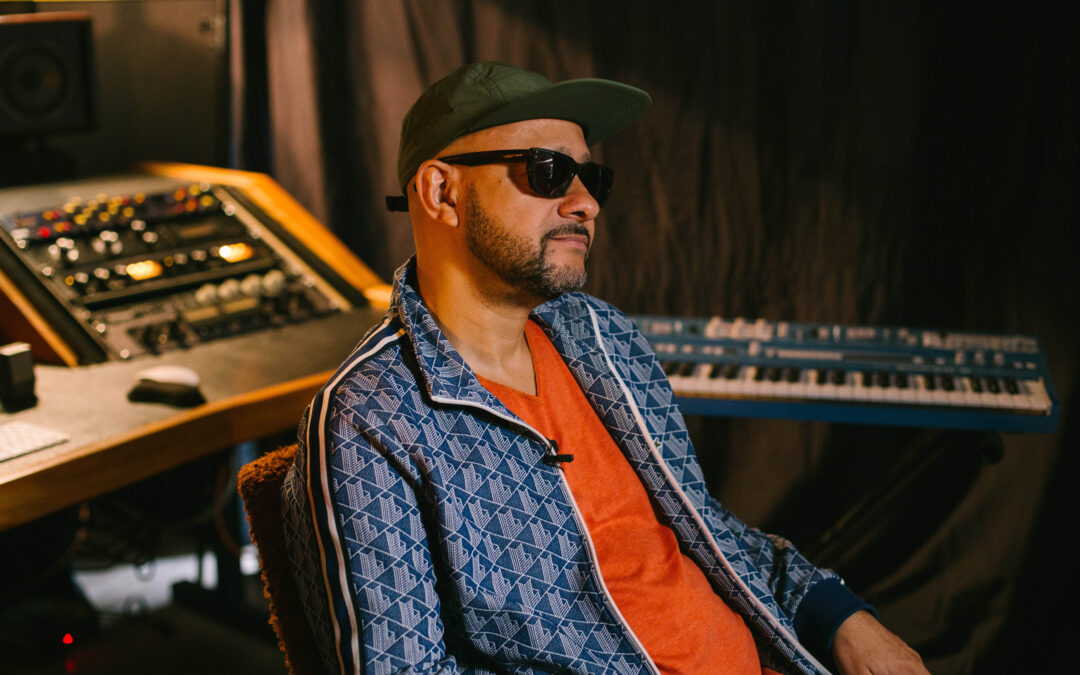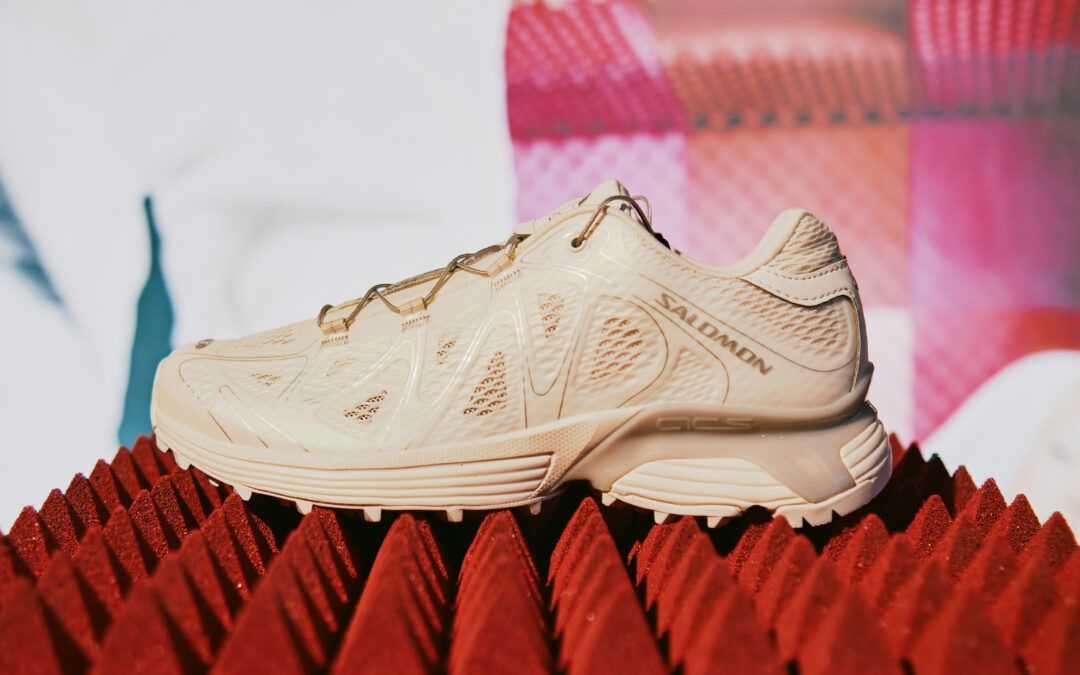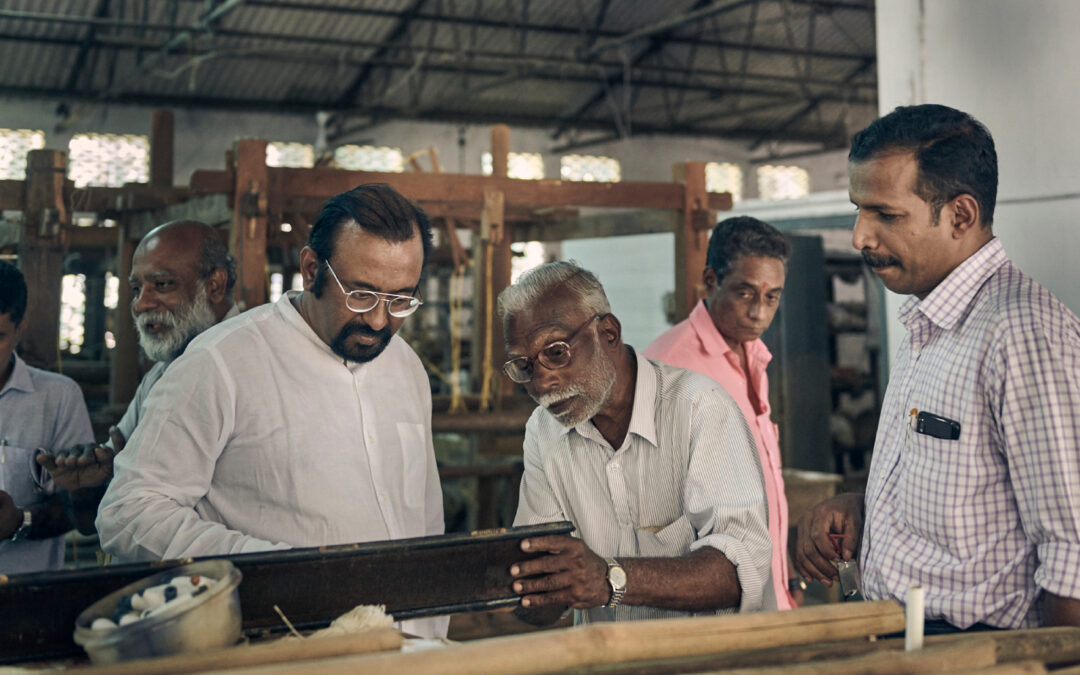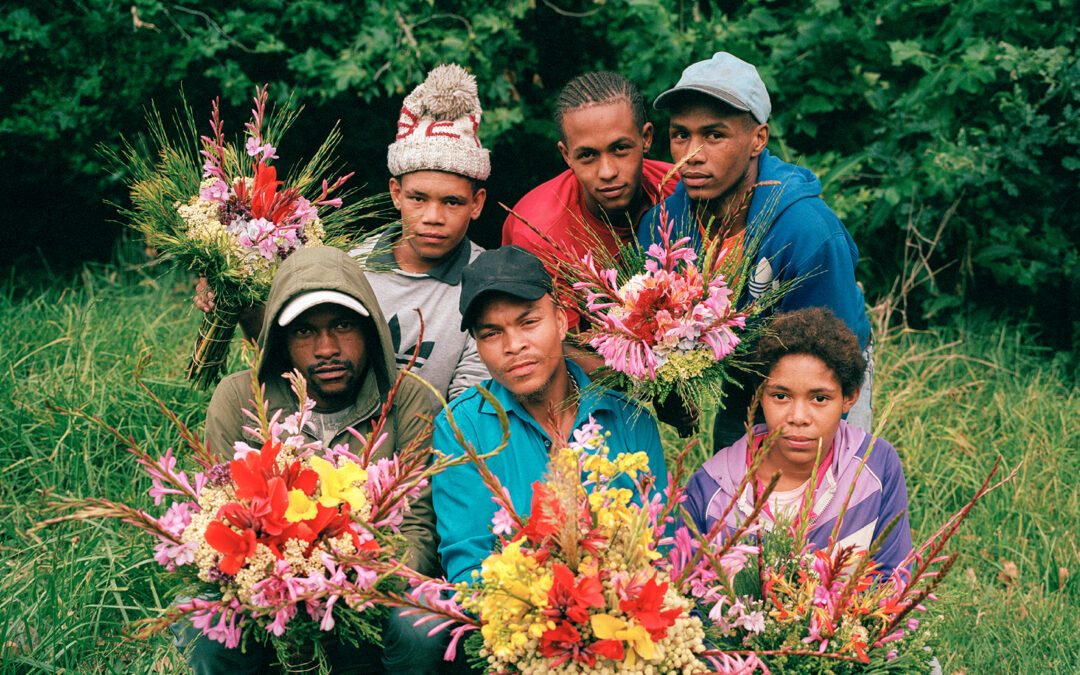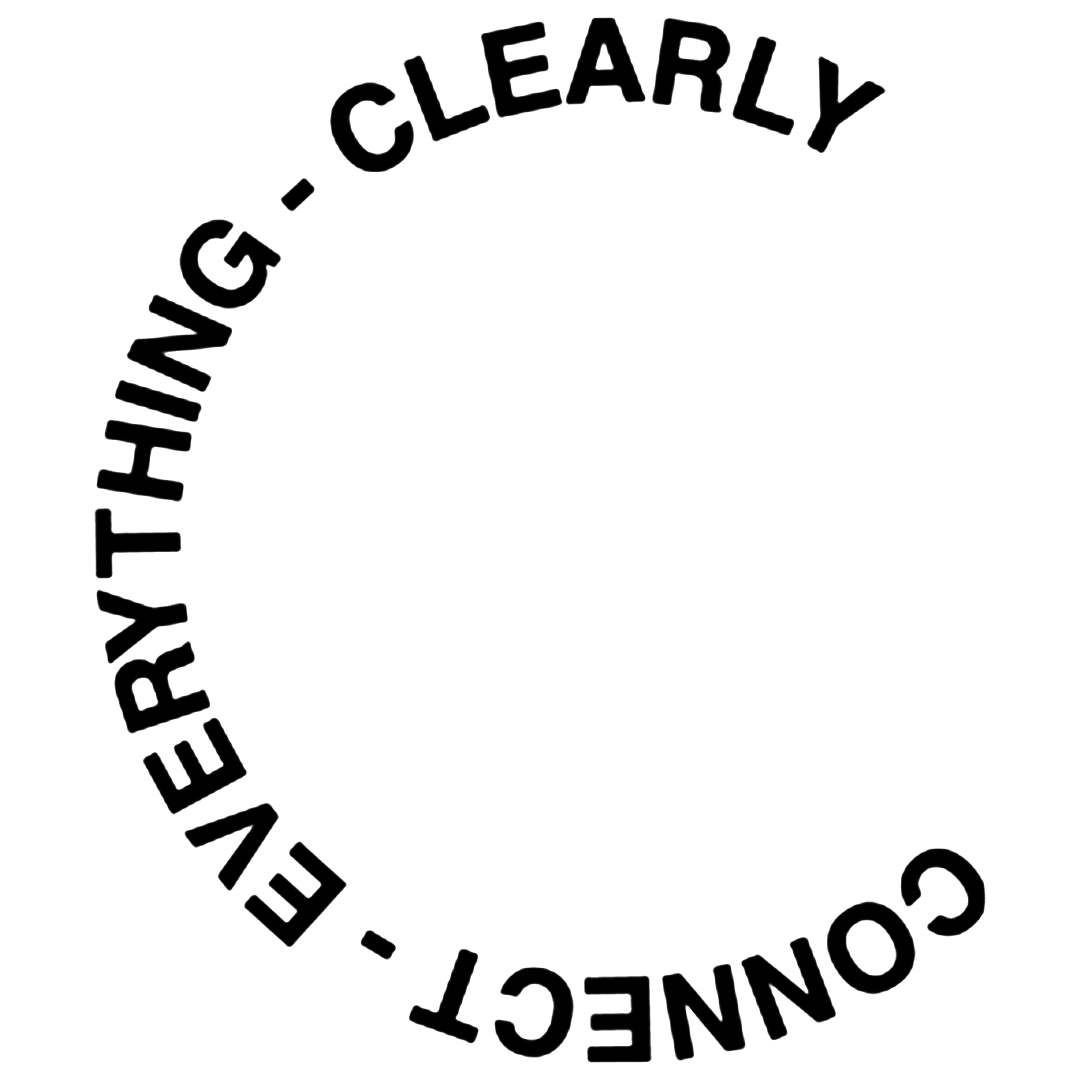Research Unit is aptly named to convey its vision; a vehicle of all the design instincts, tastes and philosophical expressiveness that husband and wife duo, Erin-Lee and Chad Petersen, have sought to explore: individually and within their partnership. Many of us know Research Unit as a fashion brand— a homegrown articulation with notes of Scandinavian and Japanese sensibilities, tempered with an aesthetic entirely of its own. To the untrained eye, Research Unit is simply cool as hell: to the trained, there is a precision within each detail. The construction, the restraint, the clarity of form—all speak to a design language that is the careful result of an approach to living and creating, a kind of Ikigain principle that defines their purpose and presence. Beneath the aesthetics is Research Unit’s humanist lens; a commitment to process, to community, to making things the right way. Erin and Chad have built a system that empowers local makers, honours intentionality, and leaves us with a foolproof study on what it means to build something from the ground up, right here in South Africa.
Research Unit’s success today is hard-won, as they will share with me later, but the protracted growing pains that are embedded within the process of building a brand have edified the broader vision of what Research Unit. Suffering beckons enlightenment, as the Buddhist’s will tell you. The brand is Erin-Lee and Chad’s legacy, a living archive of experimentation, and a challenge to each other and themselves that discomfort and learning are necessary parts of growth. In fact it appears that the many in-between spaces marking its history is precisely where Research Unit finds its edge. Every recalibration has deepened their commitment to doing things differently, and though their story is not necessarily one of overnight success, it is one of staying the course, even when the way forward wasn’t clear. I think that’s about as profound a teaching as any of us could hope to learn.
“The brand actually started in 2011, not 2013,” Erin-Lee clarifies, on RU’s origin, “At the time, I was working in high-end retail—brands like Prada, Bottega Veneta—mostly made in Italy. I started getting frustrated with what was available in the leather goods space and wanted to create something from South Africa that could hold its own on that level.”
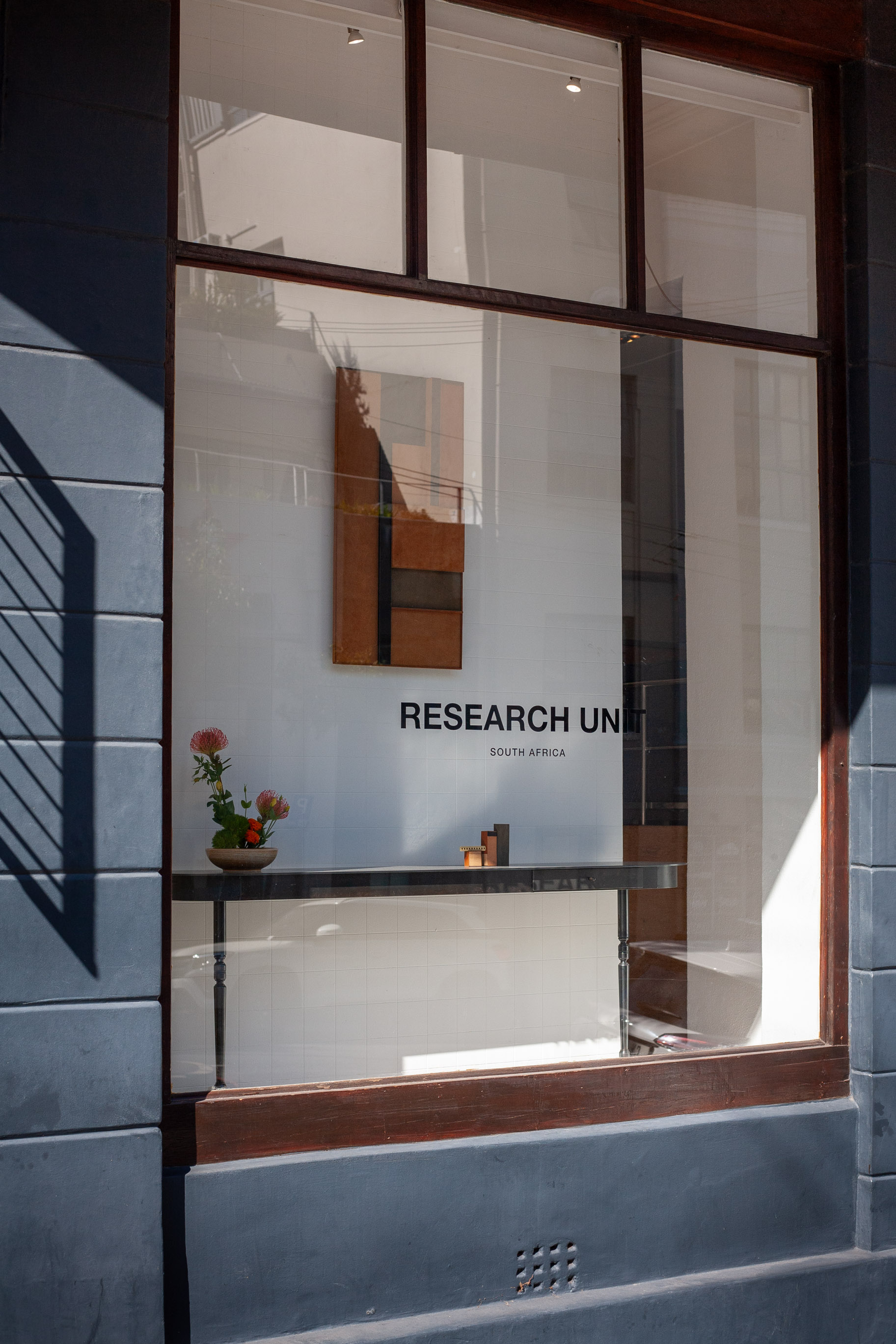
Erin-Lee and Chad, photographed by Solly King at Solo Apeture
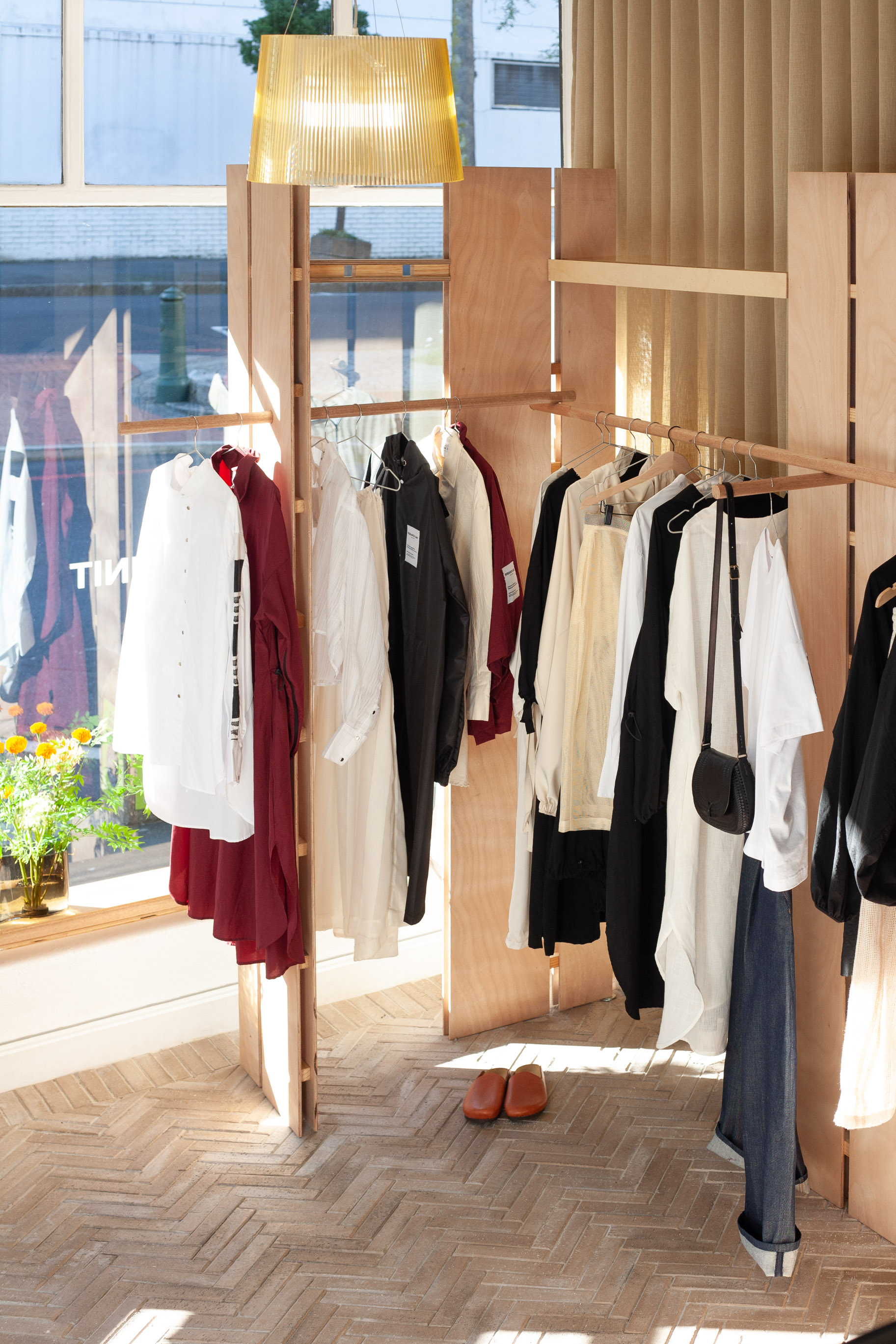
Research Unit began, quite literally, on the bedroom floor. Erin-Lee would buy offcuts of leather and experiment, no formal fashion training, just instinct and curiosity. “I studied journalism, so I had no intention of making this a business. But I’d be stitching a bag and Chad—my boyfriend at the time—would come in after varsity and be like, ‘Is that a bag?’ I’d say, ‘No, not really…’ but that’s exactly what it was.” Chad brought his industrial design background into the mix, signalling their first foray as co-collaborators, and helped to refine the product and elevate it from handmade hobby to market-ready. He applied to Design Indaba with his own furniture under the name Research Unit, while Erin-Lee submitted her leather goods under a different name: though she didn’t get in, and Chad did, “He said, ‘Just put your bags on the table next to the furniture and see what happens.’ And people went wild for the bags.” They had just gotten married, and instead of a honeymoon, found themselves scrambling to fulfill 70–80 orders from enthusiastic show-goers. “We hadn’t even taken money for them,” Erin-Lee laughs. “So we had to go back and contact everyone—and most of them still wanted their orders. That’s really how it all began.”
From the beginning, Research Unit was a brand born out of intuition. “We’ve always designed for ourselves,” says Chad. “If no one buys it, at least we’ve got cool clothes to wear and we haven’t done our work in vain.”
Neither of them studied fashion, and that shows—in the best way possible. Research Unit forms part of an alumni of brands in which its clothing are a direct consequence of its owner’s personal taste. “We usually find the fabric first, see how it drapes or falls, put it on our bodies, and then decide what it wants to become,” Chad says. “We don’t start with the idea of a ‘garment’—it’s more about how the fabric moves and how it makes us feel.”
Research Unit has always staked its claim in questioning convention, and its part of what makes its construction and detailing so compelling, “a shirt doesn’t always have to be a shirt in the conventional sense,” Chad adds. “We use first principles thinking instead of following traditional garment construction methods.” First principles thinking traces back to Aristotle, who described it in his work Metaphysics as reasoning from the most basic, self-evident truths—and in practice, is the methodical breaking complex problems down to their most fundamental truths, then reasoning up from there—like rebuilding the world from raw atoms instead of rearranging parts.
Over time, external pressures shaped their creative process. “As you grow, you understand yourself better, and you also learn a lot about the economy,” Erin-Lee says. “We’ve been through water crises, market fluctuations—it all influences how and what we design.” Chad calls it the brand’s ‘two lives.’ First as a luxury leather goods label, then—as of 2020—a full pivot to fashion. “COVID hit, and that was the turning point,” he says. “We had a factory of 25 people making leather goods. But post-COVID, we leaned fully into fashion.”
The shift happened somewhat accidentally. Again, generated by Erin-Lee seeking to solve something for herself. Having just had a baby, she designed a kaftan—voluminous, breastfeeding-friendly, comfortable—for herself. “I put two out in the shop, and they sold out in a matter of hours. That’s when I realised—okay, there’s something here.” That single garment became the foundation of an entire collection, shown at South African Fashion Week in 2019. “Someone from Fashion Week questioned me, saying, ‘But you design bags—how are you going to put out a collection?’ It made sense—they hadn’t seen my work in fashion yet. But I put together a collection that carried the same aesthetic as the Travel Kaftan: oversized, functional, and designed for the way I wanted to dress at that time in my life.”
Then COVID hit hard. With stores closed and creditors knocking, they burned through savings at lightning speed. “It was painful, but it also shaped us. It hardened us,” Erin-Lee says. “There was an easy way out—I could have just gone back to radio,” she admits, while Chad affirms, “Once you work for yourself, you can’t work for anyone else. The people we work for now are our customers, and that’s how we like it.”

Photographed by Chad Petersen
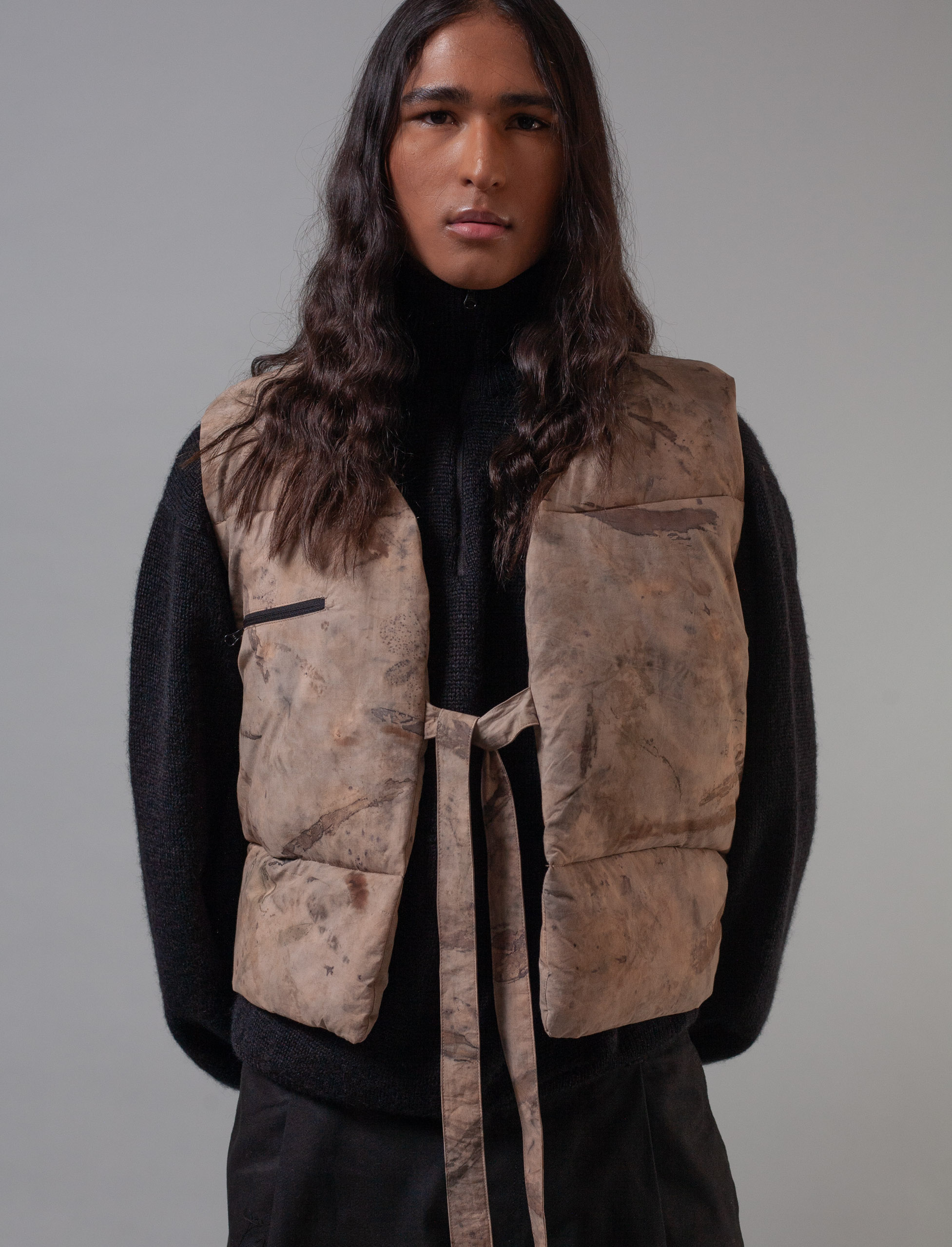
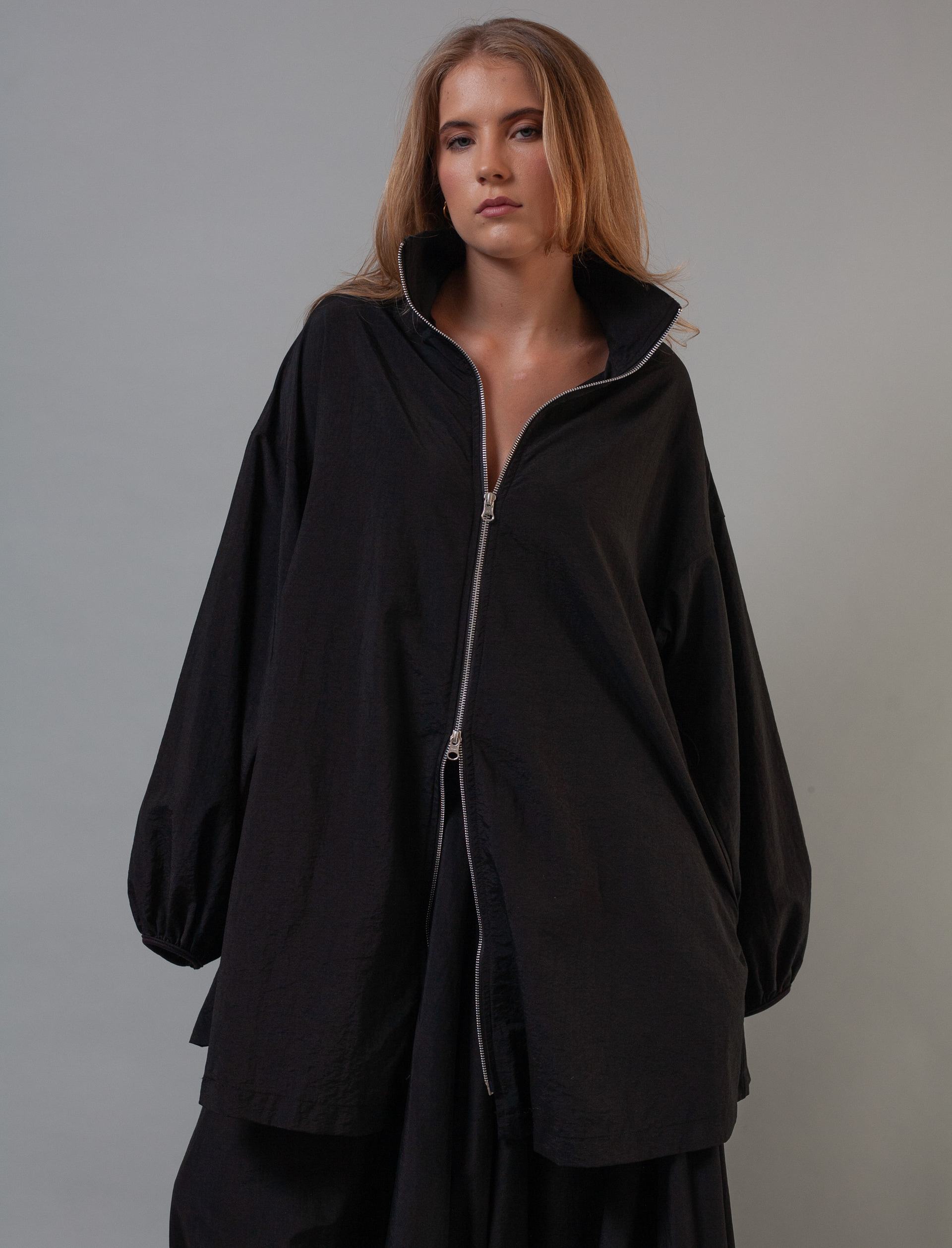

That crucible forced agility. During the 2017–2018 Cape Town water crisis, they’d already learned to be resourceful. COVID just pushed it further. “You either close your business, or you pivot. And we pivoted.”
One of the most important pivots was moving to a pre-order model. “We designed samples, Chad learned photography from YouTube, and we started shooting our pieces ourselves,” Erin-Lee says. “We’d make one of each garment, photograph it, and put it online for pre-order. That’s how we survived—and it worked.”
That period birthed some of their most beloved pieces—like the iconic raincoat, originally just one garment in a small drop. “Even when we tried to phase it out, our customers wouldn’t let us,” she says, and the garment now firmly forms part of the Research Unit’s evergreen collection.
Today, Erin-Lee and Chad’s method is one of constant iteration. “We work in what we call ‘the Kaizen way’—daily, incremental improvement,” Erin-Lee says, referencing ‘Kaizen’ (改善) literally meaning ‘change for better’, a core principle in Japanese manufacturing, that has seen the titanic ascent of brands like Toyota;l it is a way of being typically rooted in refining processes, reducing waste, and empowering every worker to suggest improvements. “Kaizen is also our son’s name, so the pressure’s on him too. But really, that’s how we move forward. Every day we’re refining, adjusting, pushing the needle a bit further.”
A proud aspect of Research Unit is that it’s made by women across the Cape Flats. With the loss of Cape Town’s textile and CMT history, the couple tapped into finding artisans who came out of this bygone era. “We didn’t have to hire in-house—we could work with skilled people in local communities,” Chad explains. “My mother was a seamstress on the Cape Flats. I grew up around people doing garment work from their homes.” Erin-Lee adds, “The first samples were made by his mom. Since then, we’ve built relationships with incredible artisans in our communities. We can make five or ten items at a time, sell them, and reinvest—no waste, no excess. This impact is the thing we are most proud of, the way Research Unit has helped to transform the lives of these women, creatively and economically.”
“Because we’re from these communities ourselves, we had access in a way others might not,” Chad says. “Some areas, like Manenberg, are dangerous if you’re not familiar—but we were comfortable, we knew the terrain. That gave us a huge advantage.”
On the subject of sustainability, Chad notes that “we don’t like to call ourselves a ‘sustainable brand’ because that word gets thrown around so much. To us, it’s just about making it last, minimising waste, and offering our customer pieces that goes beyond seasons.” Erin-Lee nods, “Even before sustainability became a buzzword, we were working bootstrapped. So we had to be careful with resources, and that shaped our entire approach to production.” Ultimately, it’s about how the clothing makes people feel. “We make superwoman, superhuman-like clothing,” Chad says. “Even though it’s just clothing, it can make you feel amazing.”
Central to Research Unit is its physical, brick-and-mortar presence in the city. Their first store at the V&A Watershed was their segue, but it’s the Bree St store that is Erin-Lee’s dream realised; “we wanted it to feel more like a home than a store,” Erin-Lee says. “That’s why it looks the way it does—so many pieces in there are from my actual house. It’s my workspace, my lounge, my office.” They even added artisanal coffee, brewed pour-over style. “It’s part of the whole experience—slowing down, being intentional,” she adds.
“I love listening to what people say,” Erin-Lee says. Chad agrees, “if someone says, ‘this would be amazing if it had pockets,’ we’ll consider making that change. But sometimes people don’t know what they want. We’re both stylists, so we love guiding our customers to wear something a certain way, and take a risk. Often, they leave with a new perspective on how to dress. it’s a balance between listening and leading.”
Photographed by Chad Petersen
Photographed by Solly King
Now, Research Unit is proudly multidisciplinary, and a vehicle for pushing the couple’s most creative and artistic frontiers. Fashion remains central, but accessories have returned, along with leather goods—though in reimagined forms. They’ve added ceramics and art too, as Chad shares “I kept all our offcuts—high-quality, vegetable-tanned leather that felt too precious to toss. One day, I started sticking leather onto leftover wood in abstract shapes. It became this meditative, therapeutic process. I wasn’t trying to sell anything. But people started to take interest. We’ve sold some, and have some in our stores.”
Looking ahead, Erin-Lee and Chad are cautious about global expansion, though they’re very interested. “We’re working with a Japanese agency at the moment, but the reality is the international market is saturated,” Chad says. “Shipping, duties, logistics—it’s not easy. Our strategy is to take small, intentional steps. We are hoping to be in one store at a time. We’re learning there’s real demand internationally for quality South African brands.”
From a single bag on a bedroom floor to an evolving studio of fashion, furniture, and fine art, Research Unit continues to push boundaries—always intentional, always grounded, always evolving. To end off, I ask the duo to share their words of wisdom for aspiring designers and business owners, and as Chad puts it, “Sometimes we chase our passion so hard, but the real shift comes when we focus on our strengths. You might want to be a fashion designer, but maybe your strength is actually in curating, not creating. And that strength could guide you straight to your passion — and you’ll be good at it too. Ask yourself: what can I be in the top 1% at? Focus on that. Do that. And everything else will start to fall into place. I wish someone had told me that a long time ago.”
And when you find that thing— that one thing only you can do— Erin reminds us that it’s consistency that makes it count: “You can have all the determination in the world, but if you don’t stick it out, it doesn’t mean anything. The hardness of finishing something — even when every bone in your body hates it — will teach you more than anything else. That follow-through? It might end up being the biggest turning point in your life. People won’t see the grind. They’ll just see the outcome. But no one can beat your consistency. That’s what separates those who dream from those who build something real.”
Erin and Chad build with a central philosophy guiding their praxis—a litany of small gestures toward slower, more enduring ways of making. While the aesthetics are sharp, global, and undeniably contemporary, Research Unit emanates with a deep sense of place—shaped by the Cape, sustained by its people, and defined by a belief that design can, and should, be impactful and transformative.
Written by Holly Bell Beaton
For more news, visit the Connect Everything Collective homepage www.ceconline.co.za

